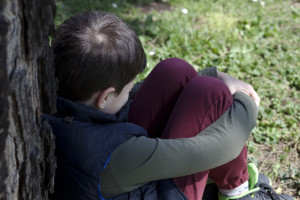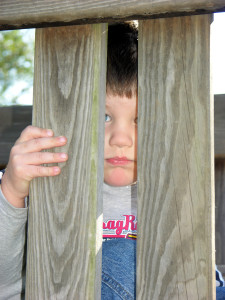https://www.sciencedirect.com/science/article/pii/S0190740923002591
Category Archives: Attachment and Trauma-Children
Regressed Behaviors in Traumatized Children
 “Why is my 9-year old smearing feces on the wall?” “Why is my 14-year old stealing food from the cupboards in the middle of the night?”
“Why is my 9-year old smearing feces on the wall?” “Why is my 14-year old stealing food from the cupboards in the middle of the night?”
When my own children were small, I remember reading a passage by child expert T. Berry Brazelton MD describing the phenomenon that every parent has observed at one time or another: regression. He explained that all children “regress” to a slightly younger developmental age when they are stressed by ordinary environmental challenges.
Children who have experienced life as dangerous and frightening due to abuse or neglect often have sudden experiences of extreme emotional and behavioral regression. Francine Shapiro’s Adaptive Information Processing model can help us understand this. The model explains that traumatic events become stored in separate neural networks along with emotions, sensations, and perceptions present at the time of the events. Trauma-related material stored in this way does not become processed, so it remains very separate and isolated in the brain.
Even after an abused or neglected child has been provided a new, safe life, a trigger of some kind can subconsciously light up the unprocessed traumatic memories, causing the child to regress to thoughts, feelings, and behaviors that were present at the time of the traumas. Many traumatized children regress around certain dates or holidays, certain times of day, or certain types of people. An angry face, a scolding, or raised voices are particularly triggering due to stored trauma-related feelings of fear, shame, and powerlessness.
A triggered, regressed child may suddenly urinate in strange places, wet the bed, play with feces, masturbate compulsively, steal shiny trinkets, throw tantrums, baby-talk, cling and cry, scavenge through cupboards for food, hide food, or run away. Regressed children do not have access to their higher order cognitive processes. Many severely traumatized children have become “stuck” developmentally so that their behaviors resemble those of a younger child on a day-to-day basis.
Behaviors caused by regression cannot be disciplined away. The antidote to regressed behaviors includes strengthening the child’s feelings of security and trust with caregivers, addressing trauma with effective therapy, and reducing environmental triggers. If you are a parent of a child who exhibits regressed behaviors, be kind to yourself. It is vital that you find the emotional support you need so that you can maintain your own emotional health while you provide attunement and connection with your challenging child.
Understanding the Problems of Parents and Children Through the Lens of Attachment
 The Advantages of a Secure Attachment
The Advantages of a Secure Attachment
The research in the field of attachment opens up a whole new world for all of us in understanding the problems of parents and children. Attachment is the emotional connection between any two people. However, life’s first attachments are by far the most important, as they set a template for all later relationships. Attachment between children and parents evolved naturally eons ago, as the children who developed a strong need to remain near their parents were the ones who were most likely to survive – both physically and psychologically.
Children who feel the most secure in their early relationships with their parents have tremendous advantages in life. They tend to grow up feeling good about themselves and others. They cope well with life’s ups and downs, and they have a strong capacity for empathy. These children naturally form other healthy, close relationships as they go out into the world. Children who have not developed a healthy, secure attachment with parents tend to grow up feeling more anxious and insecure, disconnected, and angry.
Four Ingredients of Secure Attachment
There are four main ingredients to a secure attachment relationship. The first is affectionate touch and eye contact. Cradling an infant, cuddling a toddler, and hugging a teenager all increase the sense of connection, especially if loving contact takes place on a daily basis throughout the growing up years.
The second ingredient is emotional attunement. Children feel close when they sense their parents care about their feelings. When parents soothe the distressed infant, reassure the frustrated toddler, or comfort the worried preschooler they are strengthening the parent-child bond.
The third ingredient is shared pleasure. Parents and children enjoy one another through shared play, games, jokes, and giggles. Mutual enjoyment increases children’s feelings of connection with their parents.
Finally, children need an environment that is consistent, predictable, and safe in order to be vulnerable, open and trusting with their parents. Without this kind of protective, dependable environment children develop emotional walls to keep their parents and others at a distance.
Obstacles to a Secure Attachment
All babies and children are biologically programmed to attach to their parents, but not all children develop quality attachments. There are several situations that can interfere with a good attachment. For example, children with a difficult temperament may be so highly active or so extreme in their emotions that their parents naturally have difficulty connecting with them either physically or emotionally. Chronic pain or separations due to hospitalizations may interfere with feelings of comfort and enjoyment, preventing the development of healthy bonds. Children who endured an abusive or chaotic early life and who are later placed with an adoptive family may have intense fear and hurt, and their emotional walls may be difficult to penetrate.
Parents who live in stressful circumstances may have difficulty creating secure attachments. Out of necessity they may be so preoccupied with solving the problems of living and coping that they are unable to tune into their children’s feelings and needs. Parents with addictions are unable to stay attuned to their children or provide a consistent, safe environment because they are preoccupied with the addictive substance or behavior, and the whole family may be on the addictions roller coaster together.
Finally parents who grew up without secure attachment relationships themselves often have difficulty providing the ingredients of a secure attachment relationship with their own children. Parents who did not experience nurturing and closeness growing up may feel uncomfortable with closeness and may subsequently distance themselves from their youngsters. Parents who were mistreated as children may have an excessive need to exert control over their children in order to avoid feeling vulnerable. Parents who were mistreated may perceive normal child misbehaviors as attempts to mistreat or hurt them, leading to angry overreactions. Parents who feel unlovable may fear their children don’t love them, so they may attempt to placate their children or give them things to get them to love them more. Parents who were not securely attached in childhood may be disconnected from their feelings, or they may be emotionally overwhelmed.
There is Hope for Parents and Children
Most parents love their children and want to give them the best start in life possible. By gaining a clear understanding of attachment and the obstacles they are facing, parents can overcome their difficulties and create stronger bonds with their children. Parents who lacked quality bonds as children can learn to identify and overcome the effects of their own early experiences so that they may give their children a better emotional start to life than the one they had.
(Photo: Dollar Photo Club Purchase)
Attachment in the Digital Age
My friend and colleague, Joan Lovett MD, said to me not long ago, “I think there will be a syndrome resulting from infants and children attempting to interact with their parents while the parents are talking on their cell phones or playing on their ipods.” I am afraid she may be right. There is so much more to DISTRACT us from being really present with our children than there ever was before. I myself have carried on a kind of “half there” conversation with a family member while on my laptop or returning text messages. Truly, it is not possible to be “all there” with someone while simultaneously on an electronic gadget. Due to technological advances, the “gadgets” are becoming more and more compelling, and as we have more and more ways to communicate electronically, the demands for constant communication are increased. I think as parents (and even as grandparents!), we need to be mindful to contain our electronics to specific times in our day and avoid allowing “screen time” to bleed over into family time. “Half there” communication with our offspring breeds insecure attachments and feelings of isolation. Our youngsters need to see themselves reflected in our eyes as we look at them, listening but also attuning to their facial expressions and body language. Our physical and emotional presence teaches them that they are worthy.
said to me not long ago, “I think there will be a syndrome resulting from infants and children attempting to interact with their parents while the parents are talking on their cell phones or playing on their ipods.” I am afraid she may be right. There is so much more to DISTRACT us from being really present with our children than there ever was before. I myself have carried on a kind of “half there” conversation with a family member while on my laptop or returning text messages. Truly, it is not possible to be “all there” with someone while simultaneously on an electronic gadget. Due to technological advances, the “gadgets” are becoming more and more compelling, and as we have more and more ways to communicate electronically, the demands for constant communication are increased. I think as parents (and even as grandparents!), we need to be mindful to contain our electronics to specific times in our day and avoid allowing “screen time” to bleed over into family time. “Half there” communication with our offspring breeds insecure attachments and feelings of isolation. Our youngsters need to see themselves reflected in our eyes as we look at them, listening but also attuning to their facial expressions and body language. Our physical and emotional presence teaches them that they are worthy.
When feelings are the trigger…
 Children (and adults) who experienced inadequate comfort and nurturing as infants and toddlers are frequently unable to manage any sort of emotion – positive or negative – without becoming dysregulated.
Children (and adults) who experienced inadequate comfort and nurturing as infants and toddlers are frequently unable to manage any sort of emotion – positive or negative – without becoming dysregulated.
Early deprivation leaves inadequate connections in the prefrontal brain. The prefrontal brain is like Grand Central Station, connecting the higher and lower regions of the brain and also the right and left hemispheres. The logical regions of the brain are not able to manage the emotional areas.
Another way to understand this is to think about the dependency of infants upon their caregivers to manage their emotions for them – to provide comfort and soothing when they are frightened, in pain, or stressed. When there is not comforting attachment figure, the infant learns that feelings are not safe. The infant learns the only way to cope with feelings is by shutting down. Feelings of any sort become a source of fear.
Children need their parents’ help to develop integrated brains. They need assistance to access logical thought – to step back from their emotions a bit and contemplate them – to ride out the feelings, and to find ways to feel better. It takes time and patience, but it’s an investment parents can make now that will be well worth it in the end.
Adults with a traumatic history need assistance as well, with skilled therapy and development of coping skills. Traumatized children and adults are a vastly misunderstood population.
